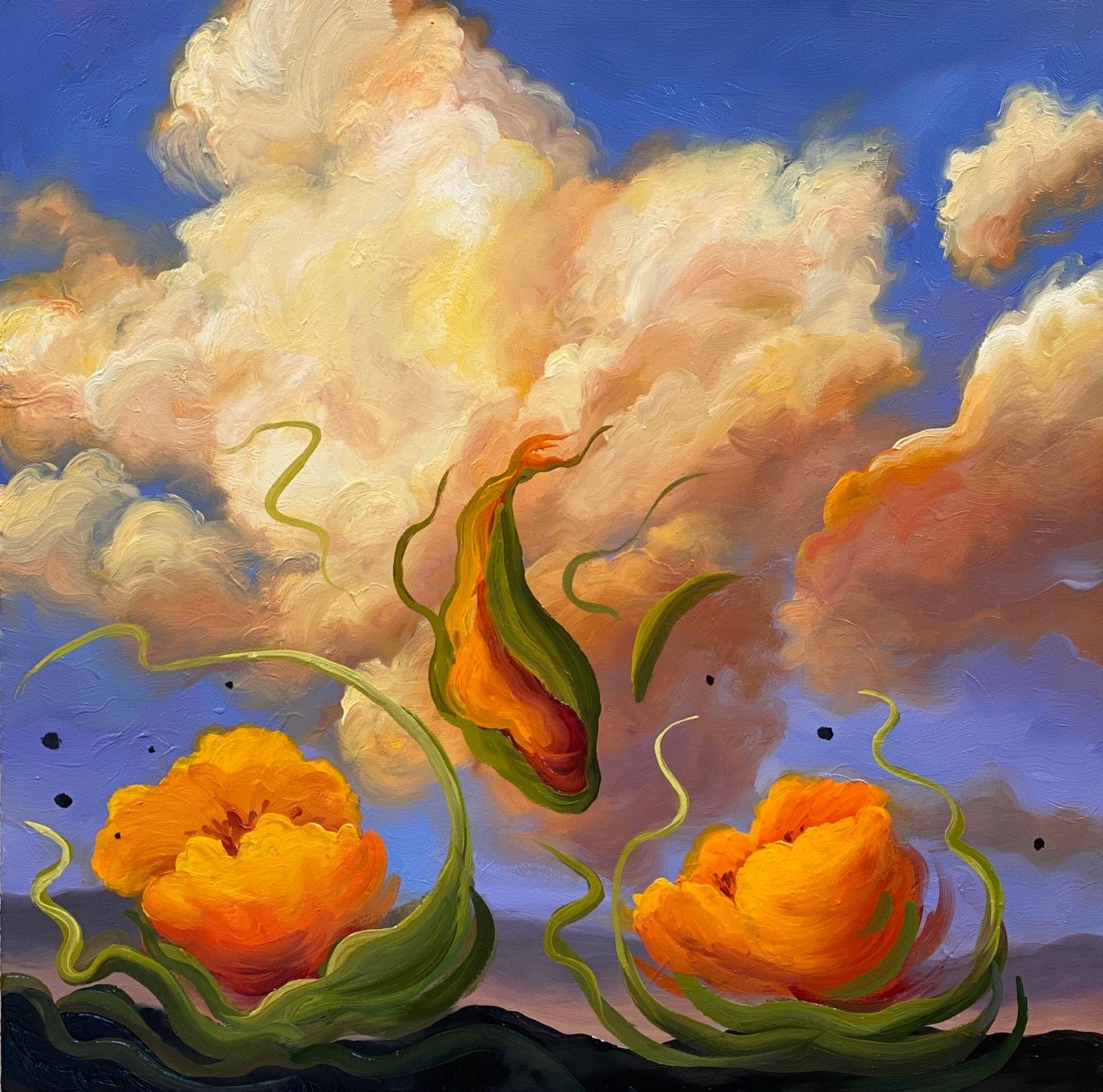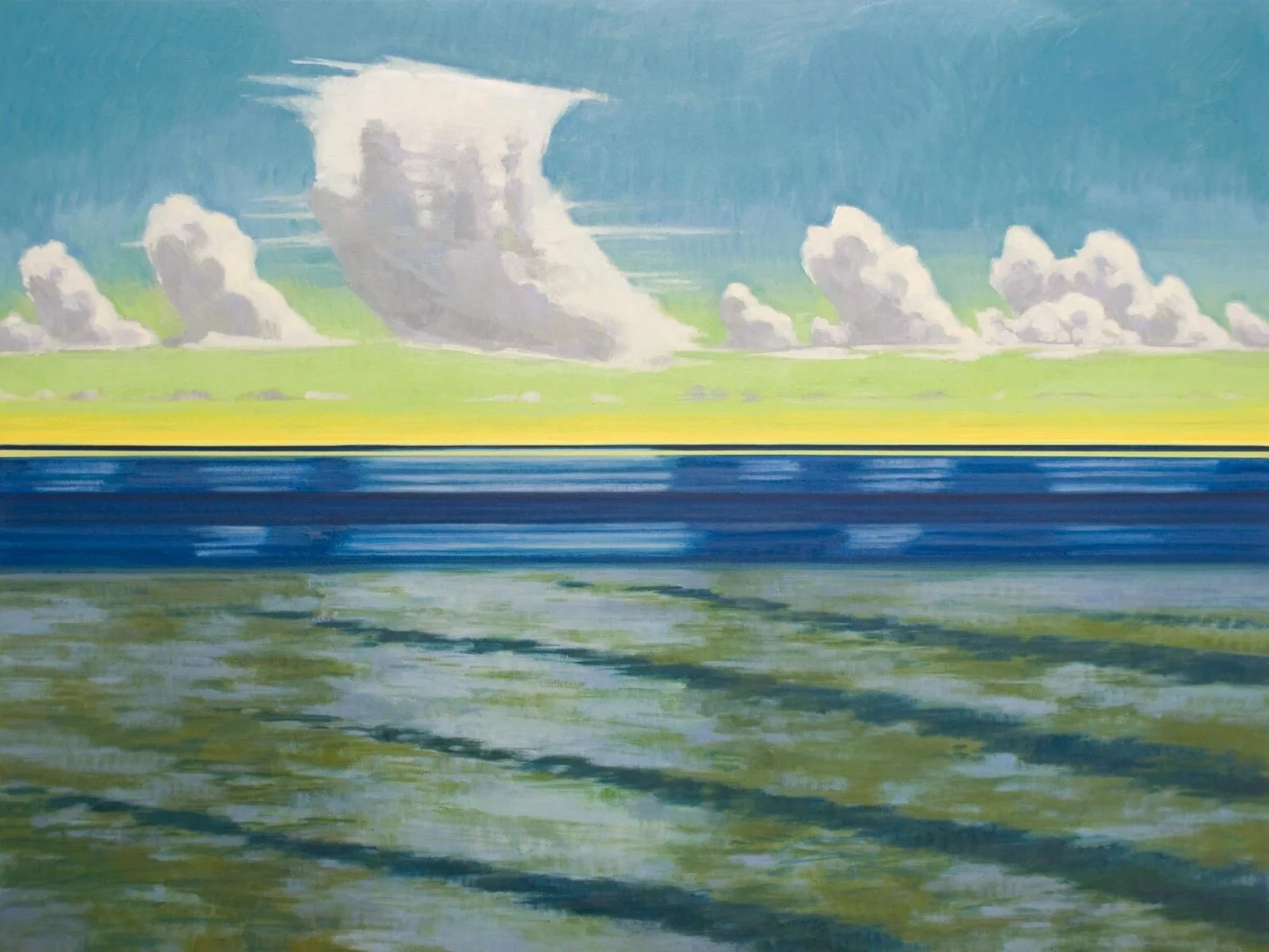Magic on the Brush: Phoebe Brunner
If ever a landscape was a living, breathing thing, it’s under Phoebe Brunner’s brush. Plants and flowers; clouds, fog and mist; open plains, mountains and shorelines – all transformed by thick layers of light-filtered paint that seem to pulse with an inner radiance.
She admits to working as a sort of conjurer: “I use beauty as a ‘hook’ to get the viewer to enter, experience, and travel to a landscape that’s enhanced. What’s important to me is the magic.”
It’s a uniquely Western kind of magic. Much of her youth was spent saddled up on a horse, wandering through the hills and valleys of a remote California ranch.
“There were no people, only solitude,” she says. The essence of those years, and her ensuing relationship to the land, followed her into the studio and onto her canvases.
Brunner’s studio hides among a tree-filled Santa Barbara neighborhood. Behind tall garden gates is a courtyard home that feels like a modernist Mexican villa. Situated on a hillside, the studio is reminiscent of Guadalajara, where she studied art.
On the ground floor, the studio appears industrial and spacious, with 15-foot ceilings, no windows, a sky light and movie set lighting.
While enamored with the drama, expanse and colors of 19th Century Hudson River School painters (i.e. artists Fredric Church and Martin Johnson Heade), Brunner says she also feels a strong connection to contemporary narrative landscape artists.
Phoebe Brunner, Bomba, oil on panel.
Pulling a catalog off a crowded bookshelf, she says, “You’ve got to search for this guy online (Midwesterner Tom Uttech).” “Look at Melissa Millar (Texas artist),” she says, thumbing through a book of Millar’s work. “Look at that,” she adds, pointing to a large, surreal narrative of animals titled The Ark. “I wish I could paint that good.”
Brunner’s work, in contrast to Uttech and Millar, is almost tame, more grounded in landscape realism. She has much in common with one of her favorite like-minded artists, New York’s April Gornick, though she also admires the work of Inka Essenhigh (NY), Sue McNally (Rhode Island), and Emma Webster of LA. In viewing her new paintings, there’s a sense that something slightly dangerous and foreboding is hiding in the mist and foliage, as in the unfolding drama of The Open Hand or Big Love. Will the advancing rain unleash a devastating flood or nourish the land?
Aware of our various cultural crises at home and abroad, Brunner says she’s not a political activist, but wants to help people be aware. “I’m optimistic,” she says, in spite of any danger seething within her unpolluted visions of the West. She’s hopeful nature will heal.
Phoebe Brunner, Out to Sea, oil on canvas.
Brunner’s oversized flower paintings are testament to this hope. The fertility of plants with their explosive seeds, tentacles and wind-driven dispersion spread life. Flowers dominate the foreground and appear disconnected. They float above Western landscapes, as in Invocation, or lower to the ground, as the poppy does in Fortune Teller. Bomba is a version of a ‘still life’ in action.
Part of the allure of Brunner’s paintings resides in their unabashed wildness – no towns, animals, people or even fences.
“These are all places I’ve been,” she says, describing a rediscovery of those places as she paints them.
“Sometimes they seem to paint themselves.”
Magic?
Phoebe Brunner, The Bright Divide, oil on canvas.
Cover Image: Phoebe Brunner, Hush, oil on canvas
Phoebe Brunner: One Fine Day is on view April 1 to May 23 at Sullivan Goss An American Gallery, 11 E. Anapamu St. in Santa Barbara.
This article was originally published in print in Lum Art Magazine 05.








